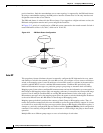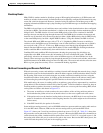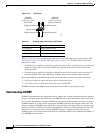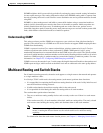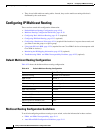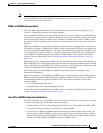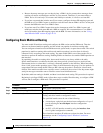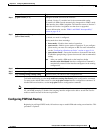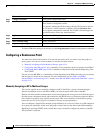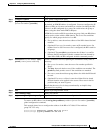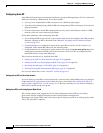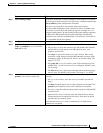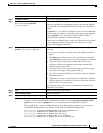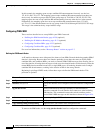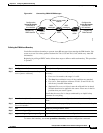
42-14
Catalyst 3750-E and 3560-E Switch Software Configuration Guide
OL-9775-02
Chapter 42 Configuring IP Multicast Routing
Configuring IP Multicast Routing
To disable PIM stub routing on an interface, use the no ip pim passive interface configuration command.
Configuring a Rendezvous Point
You must have an RP if the interface is in sparse-dense mode and if you want to treat the group as a
sparse group. You can use several methods, as described in these sections:
• Manually Assigning an RP to Multicast Groups, page 42-14
• Configuring Auto-RP, page 42-16 (a standalone, Cisco-proprietary protocol separate from PIMv1)
• Configuring PIMv2 BSR, page 42-20 (a standards track protocol in the Internet Engineering Task
Force (IETF)
You can use auto-RP, BSR, or a combination of both, depending on the PIM version that you are running
and the types of routers in your network. For more information, see the “PIMv1 and PIMv2
Interoperability” section on page 42-11 and the “Auto-RP and BSR Configuration Guidelines” section
on page 42-11.
Manually Assigning an RP to Multicast Groups
This section explains how to manually configure an RP. If the RP for a group is learned through a
dynamic mechanism (such as auto-RP or BSR), you need not perform this task for that RP.
Senders of multicast traffic announce their existence through register messages received from the source
first-hop router (designated router) and forwarded to the RP. Receivers of multicast packets use RPs to
join a multicast group by using explicit join messages. RPs are not members of the multicast group;
rather, they serve as a meeting place for multicast sources and group members.
You can configure a single RP for multiple groups defined by an access list. If there is no RP configured
for a group, the multilayer switch treats the group as dense and uses the dense-mode PIM techniques.
Beginning in privileged EXEC mode, follow these steps to manually configure the address of the RP.
This procedure is optional.
Command Purpose
Step 1
configure terminal Enter global configuration mode.
Step 2
interface interface-id Specify the interface on which you want to enable PIM stub routing, and
enter interface configuration mode.
For switches running the IP Base image, the specified interface must be
an SVI that is a VLAN interface created by using the interface vlan
vlan-id global configuration command. For all other software images, the
specified interface can be any routed interface.
Step 3
ip pim passive Configure the PIM stub feature on the interface.
Step 4
end Return to privileged EXEC mode.
Step 5
show running-config Verify your entries.
Step 6
copy running-config startup-config (Optional) Save your entries in the configuration file.



